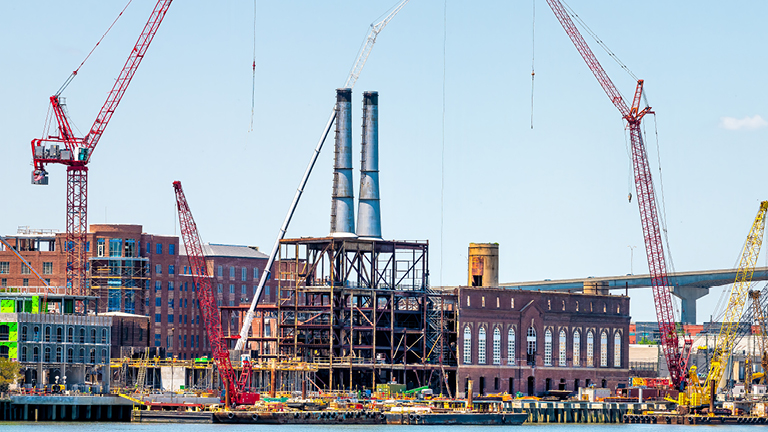Adaptive Reuse

Congress should pass legislation to incentivize the adaptive reuse of vacant and underutilized commercial buildings. Adaptive reuse property conversions can help increase the supply of affordable housing and help to restore economic vitality to cities and suburbs dealing with the impact of post-pandemic workplace changes on their local communities. Conversion of existing structures to better uses, rather than demolishing them, is also a cost-effective means of increasing housing supply while reducing environmental impact.
Download NAIOP's position on Adaptive Reuse.
Issue
- The aftermath of the COVID-19 pandemic and resulting remote work trends have led to historically high vacancy rates and underutilization of commercial structures in many communities. Hybrid work patterns are now widely believed to have become a permanent feature of modern-day labor markets. As a result, many currently underutilized commercial structures will become stranded assets unless repurposed for economically viable uses.
- A study completed in November 2022 estimated a $413 billion reduction in real estate asset values resulting from continued remote work trends. Depressed asset values of vacant and underutilized buildings negatively impact state and local budgets, with less revenue from property taxes and taxes from property sales. Reduced worker traffic also results in less sales tax revenue from enterprises in areas with reduced economic activity.
- Nationwide, both cities and suburbs are struggling with a severe lack of supply of housing, including for affordable housing. In many instances, underutilized structures in these communities are suitable for conversion to residential usage, and could become a part of a comprehensive approach to increasing housing supply.
- Repurposing of existing underutilized structures is also environmentally sustainable compared to demolition. Adapting an existing building to provide housing or for other socially beneficial purposes is a better economic alternative that also results in reduced environmental impact, including reduced greenhouse gas emissions.
- Members of Congress are considering initiatives that would spur conversions of underutilized commercial structures to residential use. Legislation introduced in the last Congress, modeled on the successful historic preservation tax credit program, would provide a 20% tax credit for the eligible conversion costs of an adaptive reuse project. Congress should pass legislation incentivizing these adaptive reuse conversions, thereby helping communities address inadequate housing supply and the structural economic changes brought about by permanent remote work patterns.
Key Points
- As a direct consequence of the COVID-19 pandemic and the shift to hybrid work, 19.6% of office space in major U.S. cities was not leased at the end of 2023, an increase from 18.8% the prior year, the highest vacancy rate since 1979, according to Moody's Analytics.
- The decreased number of workers at underutilized office buildings has been devastating to the restaurants, retailers and other small businesses that depend on daily workers for much of their business. The decline in property values has also hurt localities, which depend on property and sales taxes for much of their revenue.
- There is a severe shortage of housing supply in many of our nation’s communities. The U.S needs to build at least 4.3 million more housing units by 2035 to meet the demand for rental housing.
- Many vacant and underutilized commercial structures in our nation’s cities and suburbs are capable of being converted to residential usage to help address the housing supply shortage, but high conversion costs, city zoning and building codes, and other challenges have prevented adaptive reuse from being utilized on a broader scale.
Contact
Aquiles Suarez
Senior Vice President for Government Affairs
703-904-7100, ext. 115
